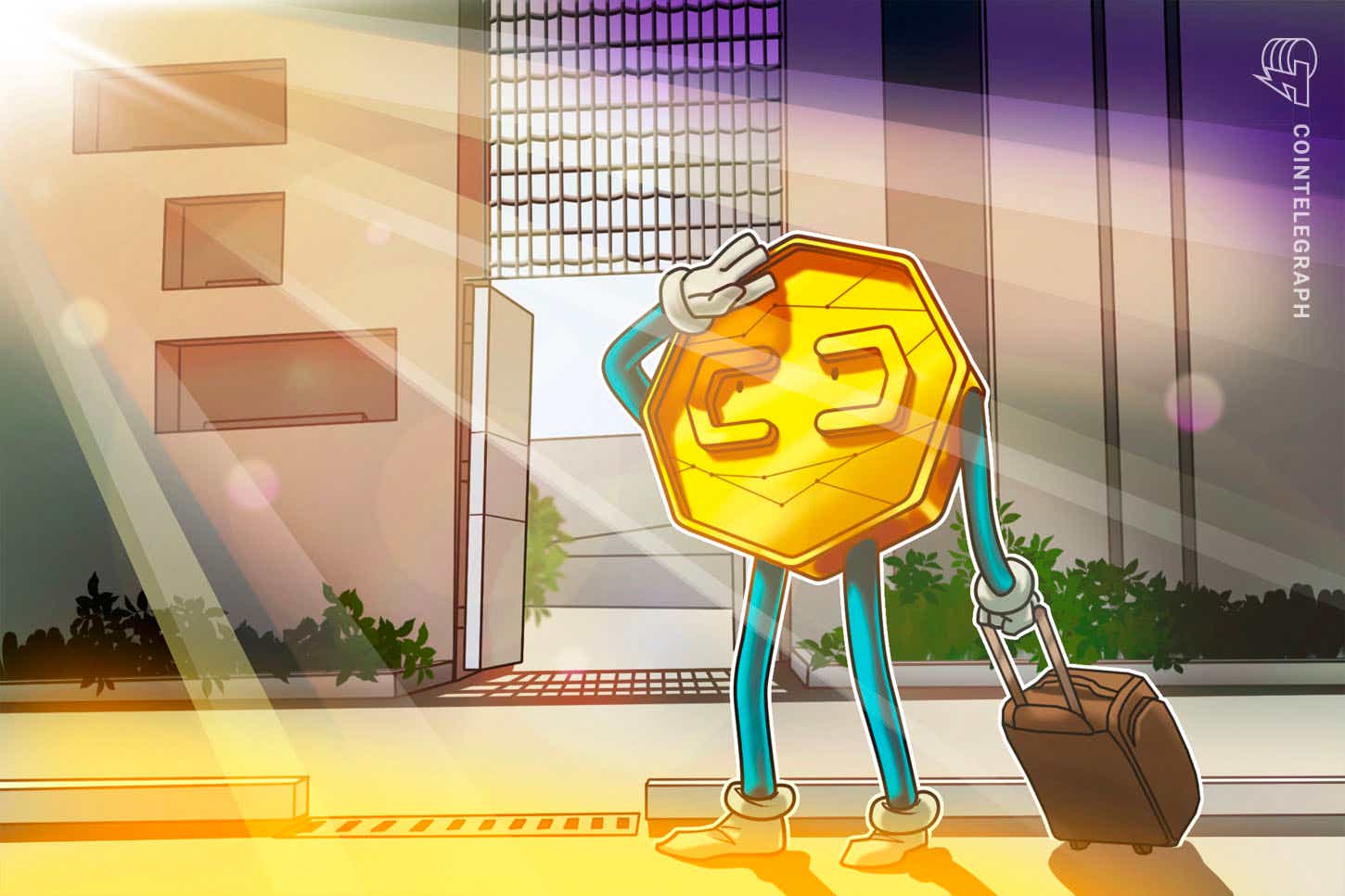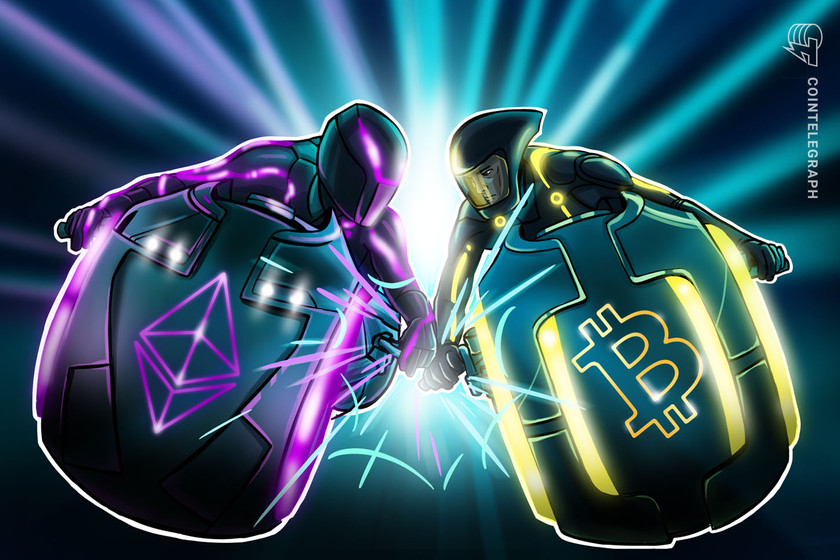Do algorithmic stablecoins have a future as centralized coins are under scrutiny?
Binance’s native stablecoin — Binance USD (BUSD) — was the third-largest stablecoin pegged to the United States dollar, minted by blockchain infrastructure platform, the Paxos Trust Company, through a transfer of technology agreement between the two firms.
However, on Feb. 13, the New York Department of Financial Services ordered Paxos to stop minting any new BUSD tokens.
The move came just days after the United States Securities and Exchange Commission issued a Wells notice alleging BUSD violates securities laws.
Binance CEO Changpeng Zhao even predicted that regulatory clampdowns would force several other crypto businesses to move away from dollar-pegged stablecoins in the near future, and look for alternative tokens pegged to the euro or Japanese yen.
Zhao’s comments came during a Twitter AMA (ask me anything) session where he said that although gold is a good backing option, most people’s assets are in fiat currencies. He admitted that the U.S. dollar’s dominance in international markets makes it a go-to fiat currency, which is one of the main reasons behind the popularity of dollar-pegged stablecoins. However, regulatory action against such assets might make way for other stablecoins.
Zhao also talked about the role of algorithmic stablecoins, many of which are largely decentralized, and said that these types of stablecoins might play a more prominent role in the crypto ecosystem in the future but are inherently riskier than fiat-backed tokens.
Algorithmic stablecoins are not traditionally collateralized; instead, they use mathematical algorithms often linked to a tokenomics model rather than backed by a real-world asset like the U.S. dollar.
Most algorithmic stablecoin projects use a dual token system: a stablecoin and a volatile asset that maintains the stablecoin’s peg by maintaining the demand and supply system that keeps the stablecoin’s value unchanged. To mint a specific value of the stablecoin, an equal amount of the native token or volatile token is burned.
Following the regulatory action against BUSD, Binance turned to several alternative stablecoins, including a few decentralized ones, to fulfill its stablecoin-centered liquidity needs. From Feb. 16–24, Binance minted 180 million TrueUSD (TUSD) stablecoins.

Decentralized stablecoins have a tainted past
Decentralized stablecoins were first popularized in the decentralized finance (DeFi) ecosystem with the creation of Dai (DAI) by MakerDAO. DAI maintains its peg through a smart contracts system governed by a decentralized autonomous organization (DAO). Although DAI has remained true to its decentralized values, it was caught up in the recent banking contagion that led to its depeg along with the Circle-issued USD Coin (USDC).
While algorithmic stablecoins stay true to the crypto ecosystem’s decentralized values, their real-life implementation has had a troubled history, especially with the collapse of the Terra ecosystem and its algorithmic stablecoin TerraUSD (UST), now called TerraClassicUSD (USTC).
Terra’s algorithmic stablecoin was once seen as the prime example of how a decentralized stablecoin could make it to the mainstream. However, after its depeg and subsequent ecosystem collapse, it has cast doubt on the future of such stablecoins.
Decentralized stablecoins suffered a heavy setback from the Terra saga, and the reputation of such stablecoins was tarnished further by the actions of Terraform Labs co-founder Do Kwon. Kwon evaded law enforcement agencies while maintaining that the debacle was not his fault, despite on-chain evidence suggesting the depeg was caused by one entity dumping over $450 million of UST on the open market. Kwon himself allegedly controlled that entity. He was recently arrested by Montenegrin authorities.
With centralized stablecoins under regulatory scrutiny and confidence in algorithmic stablecoins demolished, what does the future of a decentralized stablecoin look like? Is there a future at all?
Hassan Sheikh, the co-founder of the decentralized incubator platform DAO Maker, told Cointelegraph that a shift to decentralized stablecoins would not be in the form that people may expect. Centralized exchanges are highly vertically integrated, creating chains, wallets, staking solutions, mining ops and more.
“Any decentralized stablecoin to be adopted by exchanges is not yet on the market. It won’t be DAI or the like. The market caps aren’t significant enough to have the necessary network effect,” Sheikh said, adding, “Exchanges would be likely to fork off protocols like Maker and push for the traction of their controlled ‘decentralized’ stablecoin for that value capture. The decentralized stablecoin on exchanges wouldn’t be truly decentralized, and it most likely doesn’t exist yet, as the major ones would likely pursue their own.”
Talking about BUSD’s regulatory troubles, Sheikh said that it was merely the first test of people’s willingness to shift to a new exchange-issued stablecoin. If proven, the market will shift. Expecting a Binance version of DAI is reasonable, he added.
Sheikh also shed light on the major issues with decentralized stablecoins currently in the market. He said that the majority of these stablecoins are so deeply rooted in USDC that they’re hardly decentralized.
Many decentralized exchange pools and decentralized stablecoins, such as DAI and Frax (FRAX), have significant collateral exposure to USDC. This is why DAI issuer MakerDAO introduced an emergency proposal to address risks from its $3.1 billion USDC collateral exposure during the recent depeg.
If anything, “the aura of their marketing as decentralized is now wiped out with the recent struggles of USDC, which quickly eroded the peg of DAI. The switch to a decentralized stablecoin is too distant as the to-be dominant stablecoin doesn’t exist yet. Exchanges are supporting these purely for volume profits. The few BTC/DAI and similar pairs that do exist are so weak in an activity that the foreseeable future doesn’t show any sign of a shift to decentralized stables across major liquidity partners,” Sheikh said.
Crypto exchanges are integrated with fiat-backed stablecoins
Fiat-backed stablecoins have become a lifeline in today’s crypto world. In the early days of crypto exchanges, these stablecoins acted as an onboarding tool for many traders, and in the last decade, they have also become a key liquidity provider.
“Fiat-backed stablecoins are so deeply rooted in exchanges that it’s highly unlikely to expect a mammoth shift despite the regulatory scrutiny.” Shiekh told Cointelgraph.
Abdul Rafay Gadit, the co-founder of crypto trading platform Zignaly, told Cointelegraph that despite the recent USDC depeg, crypto trading platforms still prefer U.S. dollar-pegged stablecoins.
“I personally believe that [Tether] USDT is the best stablecoin at this moment, carefully pegged 1:1 and kind of away from unfair regulations as well. USDC was unfortunate because of its ties to SVB [Silicon Valley Bank]; otherwise, they run a great business,” he said.
He told Cointelegraph that centralized stablecoins are lifelines to the crypto ecosystem, and despite the regulatory pressure, they will continue to be a dominant force.
Gadit said that exchanges might move away from the U.S., but fiat-backed stablecoin will continue to rule:
“BUSD action looks like victimization to me; I think it’s uncalled for and totally unfair. Going forward, stable issuers will try to stay away from the U.S., just like USDT issuer Tether operates out of Hong Kong.”
Tether (USDT) continues to dominate the stablecoin market despite ongoing regulatory scrutiny against many other U.S. dollar-pegged stablecoins. Industry experts believe that even though decentralized stablecoins look promising, their real-world implementations have been questionable. Thus, centralized stablecoins will likely continue to dominate the crypto market.









